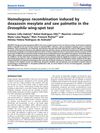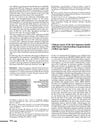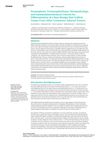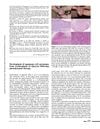Search
forLearn
2 / 2 resultslearn Osteopontin
signaling protein that, when suppressed, may grow hair by reducing inflammation and stem cell loss
Research
5 / 1000+ results
research Homologous Recombination Induced by Doxazosin Mesylate and Saw Palmetto in the Drosophila Wing-Spot Test
Doxazosin mesylate and saw palmetto cause genetic changes in fruit flies.

research Clinical Course of the First Japanese Family with Marie Unna Hereditary Hypotrichosis: A Follow-Up Report
The first Japanese family with Marie Unna hereditary hypotrichosis showed hair condition improvement in a child and highlighted the risk of misdiagnosis.

research Acorus Calamus: A Bio-Reserve of Medicinal Values
*Acorus calamus* has many medicinal benefits but needs more safety research.

research Desmoplastic Trichoepithelioma: Histopathologic and Immunohistochemical Criteria for Differentiation of a Rare Benign Hair Follicle Tumor From Other Cutaneous Adnexal Tumors
The document concludes that recent studies help tell apart desmoplastic trichoepitheliomas from other skin tumors, but more research is needed for clear differentiation.

research Development of Squamous Cell Carcinoma from Erythroplasia of Queyrat Following Photodynamic Therapy
Photodynamic therapy may not work for erythroplasia of Queyrat and could lead to invasive squamous cell carcinoma.
Community Join
5 / 40 resultscommunity This sub in a nutshell when it comes to medicine. Oral Minoxidil isn’t that bad
The post and conversation are about the use of oral Minoxidil (Min), Finasteride (Fin), and RU58841 for hair loss treatment, with mixed opinions on their safety and effectiveness.
community REVOLUTION in AUGUST: New possibilities according to Dr. Muñoz (pinacidil, cromakalim, diazoxide and nicorandil)
Dr. Muñoz's discovery suggests that targeting potassium channels in fibroblasts could reactivate hair growth, offering new treatment possibilities for alopecia. Potential strategies include using minoxidil, diazoxide, and other potassium channel openers, as well as bioelectric devices and direct growth factor applications.
community How ET-02 Works. Also no proof that it's better than Minoxidil. At least for now.
ET-02, a PAI-1 inhibitor, is not proven to be more effective than Minoxidil for hair loss. Other treatments like finasteride, dutasteride, PP405, and AMP-303 are also discussed, focusing on cellular senescence and oxidative stress.
community The Real Cause Of Androgenetic Alopecia
Androgenetic alopecia is caused by DHT affecting hair growth. Finasteride and minoxidil are used to manage hair loss by blocking DHT and promoting hair growth.
community Is it possible for androgenic alopecia to begin at early adolescent years?
Hair loss can begin in early adolescence and cause mental anguish. Treatments mentioned include eating cruciferous vegetables, engaging in physical activity, and maintaining scalp hygiene.